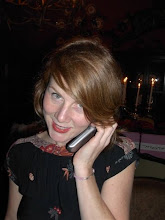 The film starts with finger snaps, of all things. Snaps as intimidation, snaps as tension, snaps as power and control and, of course, snaps as cool. Somehow, through coordinated snapping, West Side Story sets a tone for a different way of experiencing film: through color, angles, movement and sound. It might be the coolest film ever made and one of the most stylish, too. It’s the musical for people who hate musicals, a love story for people who hate love stories, a play about guys and gang warfare adapted for the screen that guys and, I’m guessing, gang members, like as much as gals typically do. When it premiered in New York City on this day in 1961, it created a new dialogue about teenagers, immigrants and the inner city, all while looking very, very cool. It’s no wonder it won 10 Academy Awards—one of which was for costume design—and reinvented what we think of when we think of musicals.
The film starts with finger snaps, of all things. Snaps as intimidation, snaps as tension, snaps as power and control and, of course, snaps as cool. Somehow, through coordinated snapping, West Side Story sets a tone for a different way of experiencing film: through color, angles, movement and sound. It might be the coolest film ever made and one of the most stylish, too. It’s the musical for people who hate musicals, a love story for people who hate love stories, a play about guys and gang warfare adapted for the screen that guys and, I’m guessing, gang members, like as much as gals typically do. When it premiered in New York City on this day in 1961, it created a new dialogue about teenagers, immigrants and the inner city, all while looking very, very cool. It’s no wonder it won 10 Academy Awards—one of which was for costume design—and reinvented what we think of when we think of musicals.To critique or discuss just the costumes of West Side Story without folding in all of the other elements—sets, dance, songs, choreography and dialogue—would be like telling just the fourth chapter of a 10 chapter book. Because all of the artists working on the film carefully coordinated to blend their piece of the story with the others, so that one element—costumes, for instance—are never in
conflict unless they’re meant to be. The story is Romeo and Juliet set on the streets of 1961 New York. The rivals are city gang members, white guys (the Jets) against Puerto Ricans (the Sharks), and their girlfriends are loyal to their own kind. The lines have been drawn and the rules of the street are understood but each gang is pushing the boundaries and tension is high. This is when Maria (the sister of the leader of the Sharks) and Tony (a Jet) spot each other across a dance floor and fall in love.
To read the full story, visit onthisdayinfashion.com.

No comments:
Post a Comment